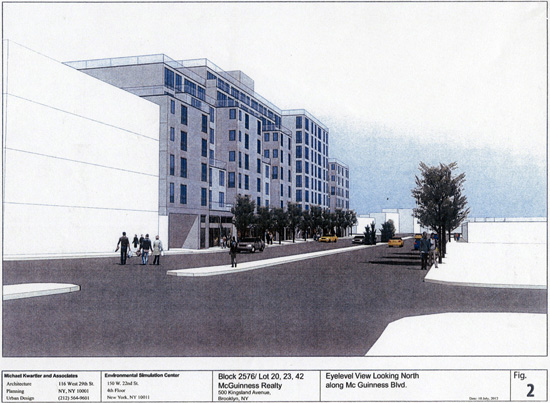According to a new study by Brad Lander’s office, the City’s inclusionary housing program hasn’t created as much affordable housing as the City predicted. That’s not really a surprise, and neither is it a surprise that most of the inclusionary housing generated has been on the Williamsburg waterfront and on the far west side of Manhattan at Hudson Yards. It’s not a surprise because those two areas are some of the few places where the incentives are deep enough to compel participation in the program. In most of Greenpoint & Williamsburg where the program was put in place, the incentive is really not that great, particularly once the market heats up.
Except on the Greenpoint waterfront – it will be big there.
Via WNYC

